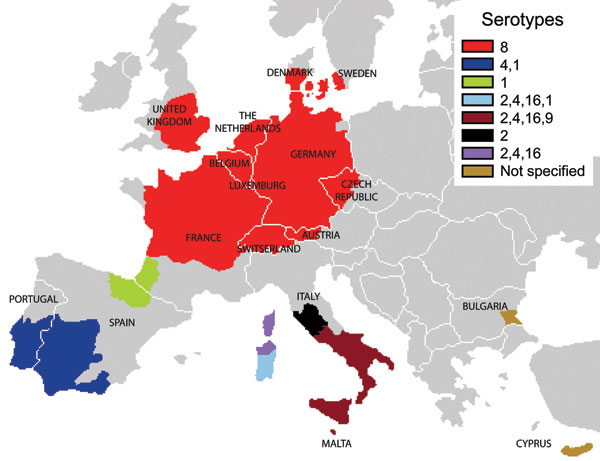Volume 14, Number 4—April 2008
Perspective
Bluetongue Epidemiology in the European Union
Figure 6

Figure 6. Bluetongue virus (BTV) restriction zones in Europe, by serotype. The radial extension of BTV-8 across Europe increases the risk for an encounter between this serotype and other serotypes that occur in the Mediterranean Basin (second epidemiologic system, where serotypes BTV-1, BTV-2, BTV-4, and BTV-16 were identified and the main vector is Culicoides imicola). This situation increases the risk for reassortment of individual BTV gene segments, and, in the more southerly areas, the period of vector activity is also likely to extend, leading to a longer BTV-8 season. In addition, BTV-1, which was first identified in sheep with clinical signs of BT in the south of the Iberian Peninsula in July 2007, has extended its range into northern Spain and southwestern France (Pyrénées-Atlantiques), since November 2007; this ongoing expansion is matter of major concern.